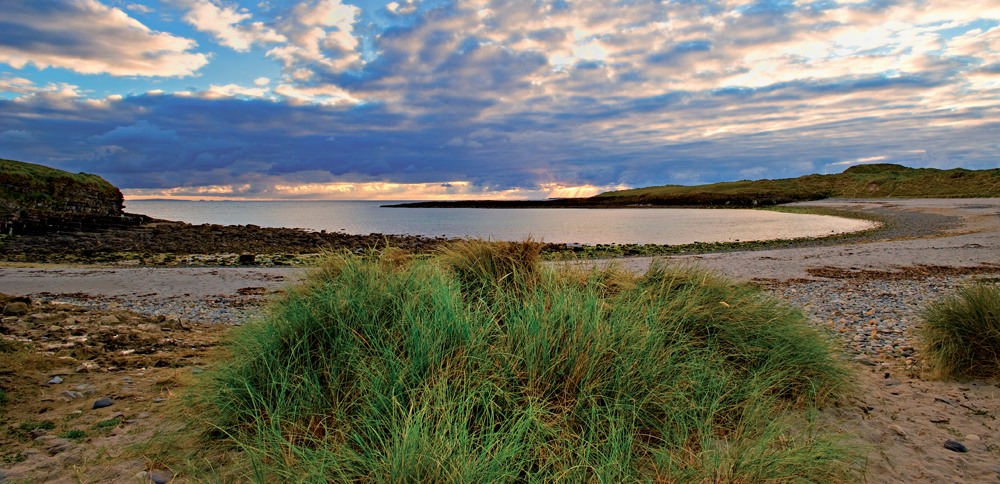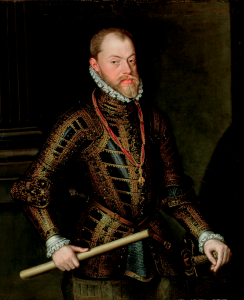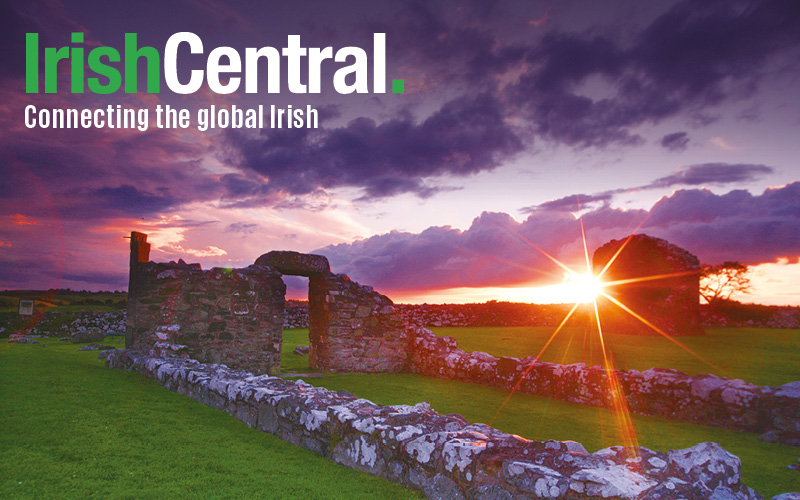How the Spanish Armada came to crash off the coast of Ireland:
It is well-known in Ireland that dark features of those from west coastal counties are attributed to bloodlines who survived Spanish Armada’s untimely shipwrecks. Here, Leonie O’Hara takes a closer look at tragic events of 16th-century disasters and their present-day evidence along stormy Sligo coast.
The historical events of the Spanish Armada of 1588, Spain’s great naval effort to conquer Protestant England, and the devastating consequences off the Irish coast have been well documented. In the Armada’s attempt to return home through North Atlantic they were driven off-course by bad weather and close on 24 ships were wrecked off the Irish coast from Antrim in the north to Kerry in the south.
About 5,000 men in total perished in Ireland. Many were put to death by Elizabeth’s army and the rest escaped to Scotland. The Spanish Armada was the largest naval invasion fleet ever known at the time, consisting of 130 ships and 29,450 men of various nationalities, including soldiers, sailors, a large number of priests and servants, all under command of Duke of Medina Sidonia, who ruled with an iron fist. Several events prior to the sailing of the Armada led to Philip II of Spain’s decision to take action against England.
Relations between England ruled by Protestant Elizabeth I and Catholic Spain were becoming increasingly strained and a potential war threatened for some time. Elizabeth had impeded in the war in Spanish-held Netherlands (at the time Spain controlled what was called Spanish Netherlands – modern day Holland and Belgium).
Also, Philip believed he had a claim to English throne having been consort to Mary (Mary Tudor) who was reigning Queen of England from 1554-1558. When Mary was executed by Elizabeth in February 1587, and in same year Sir Francis Drake attacked Spanish post of Cadiz, Philip’s decision was set. Preparations for the Armada were long and tedious. However, by May 1588, the fleet set sail from the mouth of Tagus in Spanish-held Lisbon, Portugal, in what was to become known as "Enterprise of England."
Read more: Who were the Black Irish, and what is their story?
The purpose of the Spanish Armada was to overthrow Queen Elizabeth I, restore England to Catholicism, and quash the threat of an English war on Spain and her colonies. The proposed plan devised by Philip, Marquis of Santa Cruz and Duke of Parma, was that the fleet carrying 19,000 troops and equipment was to sail up the English Channel. Their orders were that if Queen’s ships attacked them they were, if possible, to destroy them.
It was thought that their sheer weight of numbers and arms would secure them control of Channel. Following this, the Armada was to make its way to Flanders to rendezvous with Duke of Parma’s forces and escort Parma’s army to attack England.
Reports of preparations of the Spanish Armada filtered through to English-occupied Ireland, mainly from crews of trading ships from Spain and France. For Irish rebels abroad, many of whom joined the fleet, the prospect of Armada’s invasion of England was good news.

West Coast of Ireland
The last Desmond rebellion had been crushed around 1583, by Elizabeth’s army and their lands confiscated. The defeated chieftains of Munster and their compatriots went into exile in Spain, many working in navy and army. These Irish exiles hoped that a Spanish victory might restore their lands.
While in the English Channel, the Armada moved in a tight crescent shape to ensure protection from attack. At first, this confused the English who were at a loss as to how to assail enemy. However, eventually, they successfully broke crescent formation by sending in fire ships by night. This caused panic among the Spanish fleet and the subsequent attack, which became known as The Battle of Gravelines, resulted in a critical loss of men and ships for Spanish.
The English fleet, however, remained virtually unscathed. When ammunition stocks were almost exhausted and the wind changed drastically, Sidonia ordered the fleet to sail north around Scotland, and along the coast of Ireland. However, violent storms meant some ships detached from the fleet and crashed along Irish coastlines. The scattered ships of Armada began to be seen off the west coast of Ireland in September 1588.
Read more: Historians find possible mass grave of Spanish Armada victims in Co. Clare
In Dublin, Elizabeth’s government issued dire warnings about how Spanish were to be dealt with, along with any Irish who attempted to aid them immediate death. Philip’s Spanish Armada was unsuccessful. From the outset, the fleet was beleaguered with misfortune. Inclement weather hampered progress and commanding officer of the entire fleet, Sidonia, although an outstanding general, had never been to sea before and spent much of voyage seasick.
Another possible contributor to Spanish failure is that English ships were better made. Food which was kept in unseasoned casks at sea in summer was open to decay, filth, weevils, maggots and waterlogging. By the time some of the fleet’s ships were wrecked off the coast of Ireland provisions were low and the crew was weak with sickness, malnutrition and exhaustion. In County Sligo, where three ships of fleet sunk off the coast in a treacherous gale on September 25, 1588, a recent exciting discovery has confirmed their existence.

Philip II
The remains of these ships have lain undisturbed on the seabed of a small beach off the coast of Sligo for 397 years. The final resting place of wrecks of ships La Lavia, La Juliana, and Santa Maria de Vision that were part of Philip II of Spain’s great fleet lies at bottom of the sea in Streedagh Strand which is near the village of Grange in County Sligo on the northwestern coast of Ireland.
In a landmark discovery, wrecks were detected by members of Streedagh Armada Group in May 1985. The search was led by Steven Birch, who, with his team of English divers made groundbreaking discovery of what remains of ships in Streedagh.
Although the fact had been known locally since the time of wreckings, this was the first search that verified the existence of Armada ships in this area. Dr. Colin Martin, Armada historian and specialist underwater archaeologist officiated, and sites were recorded. Due to exposed nature of their location, three cannons were removed for preservation and subsequently retrieved by Office of Public Works for safekeeping. They are now held in Collins Barracks museum in Dublin where they are exhibited to the public.
A Letter of one who was with the Armada of England and an Account of Expedition was written by de Cúellar in Antwerp in 1589. De Cúellar’s testimony provides us with evidence of what occurred and is an important social and historical document detailing often horrific events he witnessed as he journeyed throughout areas of north Sligo, Leitrim and on Causeway coast of north Antrim.
What happened that fateful day is documented in de Cúellar’s record. The three ships had become detached from their squadron and drifted off the coast of Streedagh. A westward wind was howling and ships had few anchors, having cut them at English fire ship attack near Calais. They were hit by Atlantic storm and lifted as pounding waves on seaward side forced them over.
Eventually, the vessels rapidly broke up. Since the issue of ownership of wrecks has been a subject of contentious dispute and complicated legalities, after much legal dispute, it was finally ascertained that ownership of wrecks was to be designated to Irish State who now acts as a protector to these sites.
There is also another important aspect to events of Streedagh in 1588. One of Spanish aboard La Lavia who escaped subsequent massacre ashore, lived to tell the tale, outlining what happened in a letter. Francisco de Cúellar’s record of events when he was washed up, exhausted and broken, in Streedagh and his subsequent travels until he eventually got back to Spain survives. De Cúellar, a native of Castille-Y-Leon in Spain originally joined the fleet as captain of galleon San Pedro which was part of the squadron of Castille (he lost his rank and was transferred to La Lavia for disobeying orders).
There she drifted along, rolling over in different
directions with waves until she went ashore, where
she settled wrong side up…
It is estimated that from three vessels about 1,800 men drowned and the rest came ashore at Streedagh. The English George Bingham’s army killed 140 Spanish at Streedagh. However, even before English forces arrived, surviving Spanish had to deal with Irish. Thousands of Irish natives gathered in sparsely populated Streedagh, beach now littered with bodies, flotsam and injured. Several Irish attacked (but contrary to popular view at the time, did not kill) Spanish, instead they took their money, clothes, jewelry and whatever could be salvaged from ships.
Having escaped, de Cúellar’s now famous testimony records his epic journey. He found refuge from friendly chieftains (O’Rourke and McClancy) in then English-garrisoned North County Sligo/Leitrim. De Cúellar also witnessed much cruelty, arriving at nearby Staid Abbey he found "twelve Spaniards hanging within the church by act of Lutheran English." Later, after being forced to work as a blacksmith in Glenade valley de Cúellar fetches up at McClancy castle at Rossclogher, Lough Melvin, County Leitrim and spent his days telling fortunes to women.
After defending McClancy’s castle from English forces, de Cúellar was offered, as a token of gratitude, hand in marriage of McClancy’s sister. However, de Cúellar slipped away quietly and resumed his journey home. Subsequently, Brian O’Rourke, Prince of Breffni and McClancy who had helped de Cúellar were both executed by the English crown. The tragic events of September 1588 are commemorated every September in Grange, County Sligo, by the Grange Armada Development Association to pay homage to all who perished.
My thanks to Fergus O’Hagan of Moneygold, Grange, County Sligo for his help with writing this article.
* Originally published in July 2013 in Ireland of the Welcomes.




Comments